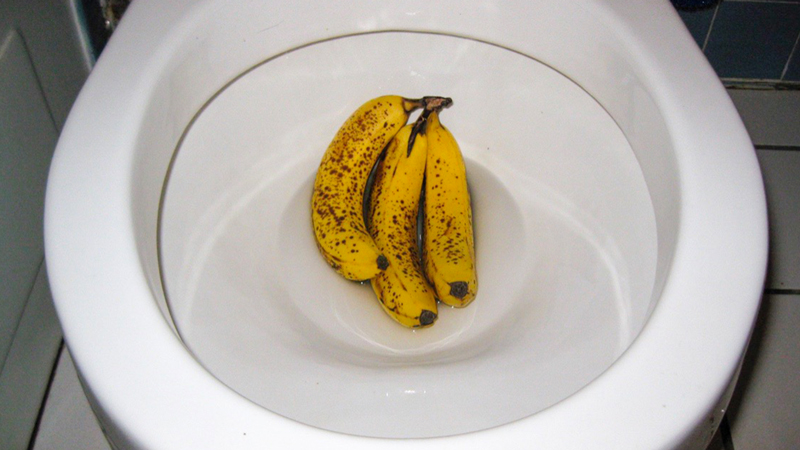Is it Safe to Flush Food in the Toilet?
Is it Safe to Flush Food in the Toilet?
Blog Article
How do you actually feel when it comes to Is it safe to flush food (especially rice) down the toilet??

Intro
Lots of people are typically faced with the predicament of what to do with food waste, especially when it pertains to leftovers or scraps. One common question that develops is whether it's all right to purge food down the commode. In this post, we'll look into the reasons people may take into consideration purging food, the repercussions of doing so, and different techniques for appropriate disposal.
Reasons that people may take into consideration purging food
Lack of awareness
Some people might not know the prospective harm caused by flushing food down the toilet. They might incorrectly think that it's a safe technique.
Benefit
Flushing food down the commode might seem like a fast and simple option to dealing with undesirable scraps, especially when there's no neighboring trash can readily available.
Idleness
In many cases, people might merely select to flush food out of sheer negligence, without taking into consideration the consequences of their actions.
Consequences of flushing food down the toilet
Ecological impact
Food waste that winds up in rivers can add to air pollution and injury marine environments. In addition, the water made use of to flush food can stress water resources.
Pipes problems
Flushing food can lead to stopped up pipes and drains, causing pricey plumbing repairs and troubles.
Kinds of food that need to not be flushed
Coarse foods
Foods with coarse textures such as celery or corn husks can get tangled in pipelines and trigger clogs.
Starchy foods
Starchy foods like pasta and rice can take in water and swell, bring about clogs in pipelines.
Oils and fats
Greasy foods like bacon or cooking oils ought to never ever be flushed down the commode as they can strengthen and create clogs.
Appropriate disposal methods for food waste
Using a garbage disposal
For homes furnished with waste disposal unit, food scraps can be ground up and flushed via the pipes system. However, not all foods appropriate for disposal in this fashion.
Recycling
Certain food product packaging products can be reused, reducing waste and reducing ecological impact.
Composting
Composting is an environmentally friendly method to dispose of food waste. Organic products can be composted and used to enrich dirt for horticulture.
The relevance of appropriate waste management
Decreasing ecological injury
Correct waste monitoring methods, such as composting and recycling, aid reduce contamination and protect natural deposits for future generations.
Safeguarding pipes systems
By staying clear of the technique of flushing food down the toilet, home owners can stop costly pipes repairs and maintain the stability of their pipes systems.
Conclusion
In conclusion, while it may be tempting to flush food down the toilet for benefit, it is essential to comprehend the prospective repercussions of this action. By adopting proper waste monitoring techniques and throwing away food waste properly, individuals can add to much healthier pipes systems and a cleaner environment for all.
FLUSH FOOD DOWN THE TOILET?
FLUSHING FOOD CAN CAUSE BLOCKED DRAINS IN YOUR HOME
All of the plumbing fixtures in your home are connected to the same sewer pipe outside of your home. This outdoor sewer pipe is responsible for transporting all the wastewater from your home to the Council sewer mains. Even small pieces of food that go down the kitchen sink can cause problems for your sewer. It should therefore be obvious that flushing larger bits of food, such as meat, risks a clog in either the toilet itself or the sewer pipes. Flushing greasy food is even more problematic because oil coagulates when it cools, coating the interior lining of your pipes.
THE TOILET IS NOT A BIN
Food isn’t the only thing that people shouldn’t be flushing down the toilet. People use the toilet to dispose of all kinds of things such as tampons, makeup wipes, dental floss, kitty litter and even underwear. Water goes to great lengths to educate residents about the high costs and stress placed on wastewater treatment systems simply from people flushing the wrong stuff down the toilet. It costs taxpayers millions of dollars each year, and homeowners thousands in blocked drain repairs.
FLUSHING FOOD IS A WASTE OF WATER
Flushing food is a waste of our most precious resource - water. In June this year Level 1 water restrictions were introduced to protect water supply from drought conditions. Much of New South Wales continues to be affected by prolonged drought with recent figures revealing up to 97 per cent of the state remains in drought. Depending on whether you have a single or dual flush toilet, every single flush uses between five and 11 litres of water. In the current climate this is a huge amount of water to be wasting on flushing food that should be placed in the bin (or better yet, the compost).
https://www.jabplumbingsolutions.com.au/blog/can-you-flush-food-down-the-toilet

I am just very enthusiastic about Is it safe to flush food (especially rice) down the toilet? and I hope you appreciated the entire blog entry. I beg you take the opportunity to share this article if you enjoyed reading it. Thank you so much for taking the time to read it.
Go Company Report this page